
Topics
Guests
- Julian Brave NoiseCatco-director of Sugarcane.
- Emily Kassieco-director of Sugarcane.
Links
We speak with Julian Brave NoiseCat and Emily Kassie, the co-directors of the Oscar-nominated documentary Sugarcane, which examines the legacy of Indian residential schools in Canada. For over 150 years, these government-funded and church-run boarding schools forcibly separated First Nations, Métis and Inuit children from their families in an effort to destroy Indigenous languages, cultures and communities. The schools were rife with physical, psychological and sexual abuse, and many children did not survive. In 2021, a First Nation in British Columbia found evidence of 215 child-sized graves on the grounds of the Kamloops Indian Residential School, setting off a nationwide search for more possible gravesites. Kassie and Brave NoiseCat would document the painful search for answers at Saint Joseph’s Mission, the residential school where Brave NoiseCat’s own relatives had been sent and near where his father was born and abandoned in a dumpster. The film explores “the colonial silence that exists in our broader society about this history” and how it has “seeped into the lives of the people who had survived it,” says Brave NoiseCat.
Transcript
AMY GOODMAN: This is Democracy Now!, democracynow.org, The War and Peace Report. I’m Amy Goodman, with Juan González.
Sunday night, the Academy Awards were given out. One of the documentaries that was nominated for an Oscar was Sugarcane. The film looks at the abuse of Indigenous children at Catholic Church-run residential schools across Canada, where they faced psychological, physical and sexual violence, often at the hands of priests. Thousands of children, including babies, infants, died of neglect and were killed at the residential schools, with unmarked graves being found to this day. This is the trailer for Sugarcane.
MARTINA PIERRE: I have felt dirty as an Indian, all my life, in residential school.
WHITNEY SPEARING: Look at that. It’s all names.
JEAN WILLIAM: When you’re brought up in an institution like the Catholic Church, you have strict rules, and you went with their ethics.
JULIAN BRAVE NOISECAT: I’ve been trying to find out what happened at Saint Joseph’s Mission.
JEAN WILLIAM: Everything was so secretive.
JULIAN BRAVE NOISECAT: My dad was born there. How did it happen?
ED ARCHIE NOISECAT: It’s not something that you want to open up. You know, it just keeps on damaging.
JULIAN BRAVE NOISECAT: For decades, there were reports of neglect and children dying or disappearing from this facility.
WHITNEY SPEARING: Two girls drowned. Priests were moved around.
CHARLENE BELLEAU: Why are they dying? Did they think we’d be stupid all of our lives, the rest of our lives, and nobody would ever find out these things?
RICK GILBERT: Being sorry for something is just the first step. You have to take action.
CHIEF WILLIE SELLARS: We see the impacts in our community every single day. And we need to continue to hold each other up.
CHARLENE BELLEAU: Julian, I ask you to open your heart. Our people are going to stand up.
JULIAN BRAVE NOISECAT: Your story is of someone who was abandoned, but also who abandoned.
ED ARCHIE NOISECAT: You do know what happened with me, right?
JULIAN BRAVE NOISECAT: I want to know the whole story.
AMY GOODMAN: The trailer for Sugarcane, co-directed by Julian Brave NoiseCat and Emily Kassie, who both join us now from Los Angeles. Julian Brave NoiseCat made history as the first Indigenous filmmaker from North America to be nominated for an Academy Award in the best documentary feature category. His father is the only known survivor of the practice of infanticide at the Saint Joseph’s Mission School in Williams Lake, British Columbia. Julian’s new op-ed for The New York Times is headlined “I Told a Native Story That Earned an Oscar Nomination. There Are So Many More to Tell.” And Emily Kassie is an award-winning filmmaker and investigative journalist.
We welcome you both to Democracy Now! I’m still reeling from watching your film last night on Hulu, from watching Sugarcane. Julian, I want to begin with you, as the son of a man who survived the practice of infanticide, if that makes sense to people. If you can talk about how you ended up joining Emily in this? At first, you weren’t sure if you wanted to do this. But what it meant to focus on the Saint Joseph Mission?
JULIAN BRAVE NOISECAT: Well, thank you so much for having me on again, Amy. It’s always a pleasure to be on Democracy Now!
You know, we’re incredibly proud of our film Sugarcane. It tells an untold and largely unknown story, especially here in the United States, about a system of attempted cultural genocide, six generations of Indigenous children forcibly separated from their families for over 150 years and sent to segregated boarding schools, where they are often abused, and sometimes far worse happened. Our film follows an investigation at one of those schools, Saint Joseph’s Mission, near Williams Lake, British Columbia, Canada. It happens to be the school that my family was sent to.
But, you know, when I first actually discussed the possibility of working on a documentary on the subject with Emily, it was just generally about Indian residential schools. And this really crazy thing happened, which you can read a little bit more about in The New York Times, where I told her I’d have to think about being able to work on a film on that subject at all, because it was such a personal and heavy subject. She went off and found a First Nation that was going to begin its own investigation. When I circled back around to tell her that I was open to collaborating with her, she told me that the investigation that she had secured access to follow was at Saint Joseph’s Mission, which, as you might imagine, was a really crazy bashert, kismet moment, because, of course, that’s the school that my family was sent to and where my father was born. And in telling this story, of course, we’re telling a personal and familial story, but we’re also trying to tell a story that’s representative of the experience of an entire people here in North America.
JUAN GONZÁLEZ: And, Julian, did the members of your family ever talk about their experiences? Could you talk about what you learned growing up?
JULIAN BRAVE NOISECAT: Yeah. You know, I did not grow up on the Canim Lake Indian Reserve, which is the reservation that my family comes from, but I spent a lot of summers and holidays going back. When I was in college, I actually lived there over the summers and spent my time learning Secwepemctsín, which is our language. It was the language that was actually nearly wiped out by Saint Joseph’s Mission and the Indian residential schools. And I learned that language from my kyé7e, who is one of the participants in our documentary. And if you’re learning a language from your grandmother — that’s what kyé7e means — who was sent to one of these schools and who nearly lost that language because of them, you know, you might ask questions about what happened at those schools.
And from the little bit that I had heard from her, which was essentially a couple of stories — one about how she was not supposed to be sent at all, and her family tried to hide her in a cabin in the woods, and another about how at the school they would call the priests and nuns kenkéknem, meaning “the black bear,” because not only they wore black, but because they were also predators — you know, I really got the understanding that this was a very painful experience, one that she was not comfortable speaking about at all, and one wherein the silence, the colonial silence that exists in our broader society about this history, you know, also had seeped into the lives of the people who had survived it, who were suppressing some often very painful memories, and that that was a very significant part of our intergenerational trauma as Indigenous peoples.
AMY GOODMAN: Julian, before we also bring Emily into this conversation, I said in the lede that your father was the only known survivor of the practice of infanticide. Can you describe how he was found as an infant?
JULIAN BRAVE NOISECAT: So, my father was born at or near Saint Joseph’s Mission near Williams Lake, British Columbia. Our understanding is that he was likely born on the fourth floor of the dormitories there. My kyé7e, my grandmother, was a student at that school, but by the time my father was born, she was 20 years old. She had actually just started as a nurse in the nearby settlement of Williams Lake. He was discarded into a garbage burner, a trash incinerator, at the school after he was born, under circumstances that we still do not fully understand, though logic would tell you that it would be impossible for someone who just delivered a baby to get up and walk that baby to a garbage burner, so there is a question of who else might have been present. And about 20 minutes or so later, give or take, he was discovered by a man named Antonius Stoop, who was a Dutchman from the old country, who worked at the school. He’s sometimes described as a dairyman in sources, other times as the nightwatchman. And very notably, given that my last name is NoiseCat, his cries for life were described by Tony Stoop as sounding like the noise of a cat.
So, it is very — you know, it’s a very crazy, somewhat spiritual, but also it’s a story about not just what the schools did to Native people, but then how that colonial oppression then shaped our relationships to ourselves and some of the ways that we internalized and perpetuated that abuse across generations and that abandonment across generations, which is also something that impacted my own life, as you see in Sugarcane.
JUAN GONZÁLEZ: Yeah, I’d like to bring Emily Kassie into the conversation. Emily, you’ve covered human rights abuses globally, from Afghanistan to Niger. What drew you to investigate the legacy of Canada’s residential schools?
EMILY KASSIE: Yeah, so, you know, I have done this work and sought to understand why we exact violence on one another. That comes from my own family history and community growing up amongst Holocaust survivors and their descendants. And I heard about the unmarked graves in May of 2021, and I realized in that moment that I had looked for these answers all around the world, but I had never looked in my own backyard at what had happened in the genocide that was perpetrated in my own country. I was born and raised in Toronto. The last year of the residential schools was in 1997, which was my first year of kindergarten, and yet we were taught nothing about it. I knew virtually nothing, until I had become a journalist and a filmmaker and had learned a little bit. So, when that news broke, I felt this kind of gut pull to the story.
And there were two things I did that day. One was reach out to Julian. Jules and I had worked our first reporting jobs together almost a decade ago. We had been randomly sat at the desks next to each other. And he had gone on to become a very prolific writer and journalist, looking at Indigenous life in North America. And when he told me he’d think about it, I went looking for a nation that was going to do a search. And I happened to find this article in the Williams Lake Tribune about Chief Willie Sellars. And I wrote him a cold email, and Chief Sellars called me back, and he said, “The Creator has always had great timing. Just yesterday, our council said we need someone to document our search.” Of course, as Julian said, little did I know that I had ended up selecting the very school where Julian’s family attended and where his father’s life began, out of those 139 in Canada and 417 in the United States.
AMY GOODMAN: I wanted to go back to 2022, when Pope Francis made a historic trip to Canada to apologize for the mistreatment suffered by Indigenous children in residential schools run by the Catholic Church.
POPE FRANCIS: [translated] I myself wish to reaffirm this, with shame and unambiguously, humbly beg forgiveness for the evil committed by so many Christians against the Indigenous peoples.
AMY GOODMAN: Can you, Julian, talk about the significance of this moment? Now the pope lays in a hospital, is very, very sick. But what happened there? And also, Prime Minister Trudeau, what this means and what kind of reparations are being made, if that’s at all possible?
JULIAN BRAVE NOISECAT: In Sugarcane, we have a political diptych close to the sort of crescendo in the narrative, where first you see the prime minister of Canada, Justin Trudeau, visit the Williams Lake First Nation and issue his own sort of preemptive apology to beat the pope to the punch, which is, just as an aside, a very Canadian, liberal Canadian thing to do, to be the first one to say “sorry.” And we hope that our viewers sort of understand the humor in that, even though it’s obviously a very serious subject.
And then we follow a survivor of Saint Joseph’s Mission, the late Chief Rick Gilbert, to the Vatican, where he attends the papal apology to survivors of Indian residential schools in Canada. And, you know, Emily actually had to sneak into the Vatican to record that, because the Catholic Church, even when it comes to apologies, kind of shockingly, is still incredibly controlling as to what narratives it allows to be told about itself and its actions. And in that moment, the pope actually chose to deliver that apology in Italian. So, many of the attendees themselves, still faithful Catholics despite everything that happened to them at these schools, actually were not able to really process and understand the apology that was being given to them in that moment, which I think, you know, in the film and in broader society, should beg the question of: What would it actually mean to apologize, you know, and what would that mean in a truly Catholic sense of atonement?
You know, our film, while it takes on the wrongs of the Catholic Church, also, I think, is quite evenhanded in portraying the way that our elders in particular in my community remain committed to the Catholic Church, and actually often survived some of the abuses they suffered at the hands of representatives of that faith, you know, with a rosary in their hand, by praying to God and Jesus and the Great Spirit in the way that they learned at the schools, which I think is a very complicated part of this history that I think is also very human. You know, I think we remain attached to things that sometimes also harm us.
EMILY KASSIE: I’ll just add, as well, that, you know, this moment was — there was a real feeling of emptiness in the room. You know, apologies mean something to some people, and that matters. And, of course, the film was part of Joe Biden’s historic apology, as well. But it’s not nearly enough. The Catholic Church has refused to open their records to Indigenous communities so that their survivors can at least know the truth. That’s the same with the U.S. and Canadian governments. And, of course, the Catholic Church apologized for the actions of individuals, not the actual institution, which moved priests around as they knew they were abusing them.
And, you know, though Julian’s father was the only known survivor of the incinerator, we know that there were a lot more babies at Saint Joseph’s Mission, potentially other schools, who were either adopted out into white families after being, many of them, born to priests, like the late chief Rick Gilbert was. You know, his father was the principal of the school. That’s the individual that we followed to the Vatican. He was carrying that dark secret in his very own DNA. And other babies, we know, were also found in the school’s incinerator, babies who were born at the school. So this is a pattern that was insidious. And those harms have never been acknowledged by the Catholic Church. And the Catholic Church has not acknowledged the film or what was uncovered for the first time in it.
AMY GOODMAN: We just have 20 seconds, but Julian and Emily have just come from the Academy Awards ceremony. Julian, how did it feel to make history as the first Indigenous filmmaker from North America to be nominated in the documentary category?
EMILY KASSIE: In any category, actually, yeah.
JULIAN BRAVE NOISECAT: Yeah, it was really beautiful to see, in particular, my father, my auntie Charlene, who’s in the film, Chief Willie, also in the film, on the red carpet. You know, it just signified that we had something really special here in this film and that the broader world was getting an opportunity to see that. And, you know, we wanted to give Indian Country a reason to hold their heads high, and I think we did.
AMY GOODMAN: Well, you certainly did. Julian Brave NoiseCat and Emily Kassie, you did such an incredible job. It is an unforgettable documentary, co-directors of the Oscar-nominated film Sugarcane. We’ll link to Julian’s piece in The New York Times headlined “I Told a Native Story That Earned an Oscar Nomination. There Are So Many More to Tell.”
Coming up, we remember Aaron Bushnell, the 25-year-old active-duty Air Force member who self-immolated a year ago outside the Israeli Embassy in D.C. We’ll speak to a friend, as well as an active-duty soldier who has applied for CO status, conscious objector. Back in 30 seconds.
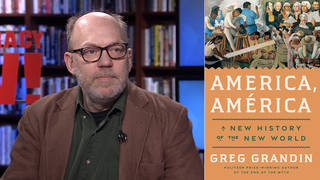

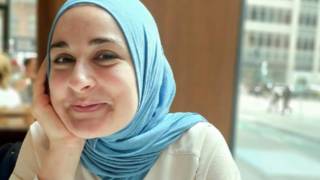
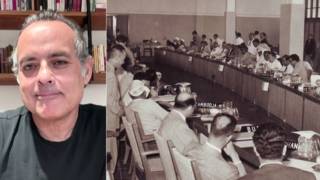
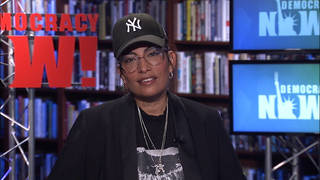
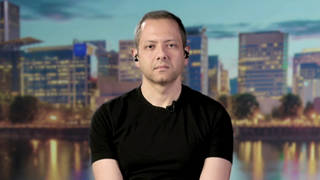

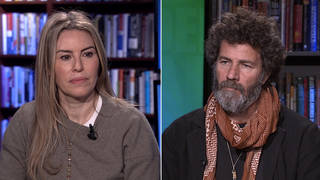
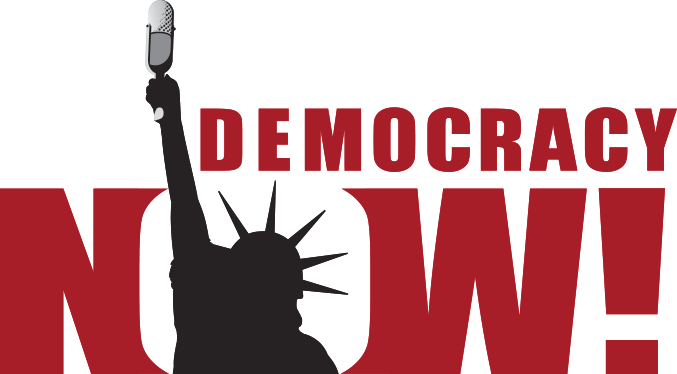
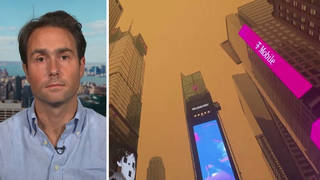
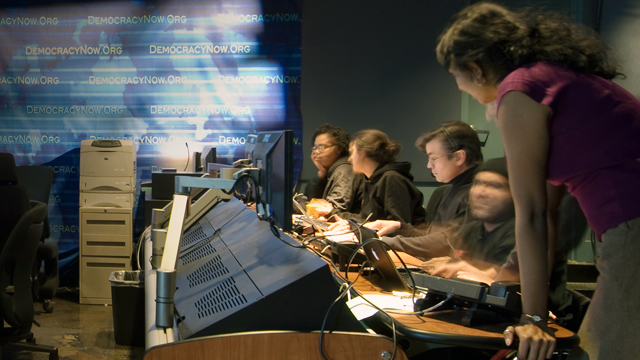
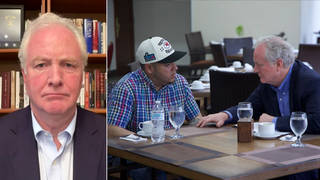
Media Options